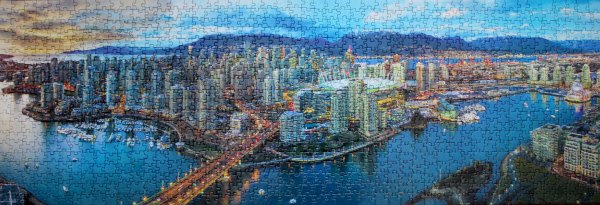
Size: 1000 pieces
Available for purchase on eBay
Dimensions: 33 cm x 99 cm
Manufacturer: Eurographics Puzzles, 6010-0740
Box: photo
Tag: puzzle
Panoramic Autumn View

Size: 1000 pieces
Available for purchase on eBay
Dimensions: 51 cm x 68 cm
Manufacturer: Karmin International, 50494, KW 0523
Photographer: Andrew Mayovskyy
Box: photo
Mossman Gorge – Queensland, Australia

Size: 1000 pieces
Available for purchase on eBay
Dimensions: 32.7 cm x 94.8 cm
Manufacturer: Schmidt Puzzle, 51300143, 59286
Photographer: Mark Gray
Box: photo
Up, up and away
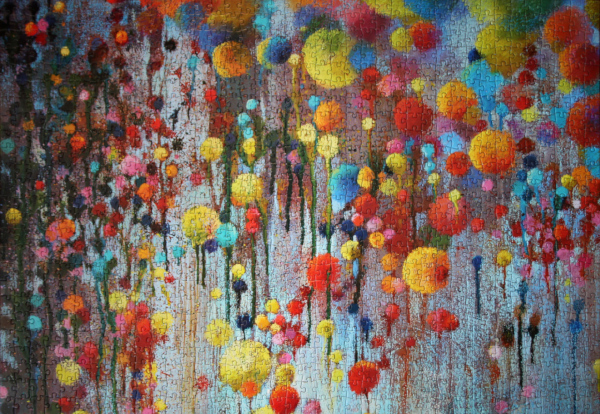
Size: 1000 pieces
Available for purchase on eBay
Dimensions: 51 cm x 73.5 cm
Manufacturer: Flame Tree Publishing, FTJP28
Artist: Nel Whatmore
Box: photo
Mediterranean Harbour

Size: 1000 pieces
Available for purchase on eBay
Note: I no longer have the box for this puzzle,
so if you could provide any more information
regarding the puzzle or the image, I would much appreciate it.
Box: photo
Rocky mountain reflections

Size: 500 pieces
Available for purchase on eBay
Dimensions: 49.6 cm x 62.5 cm
Manufacturer: Page Publications, ISBN: 978-1-64833-029-2
Box: photo
The garden shelf
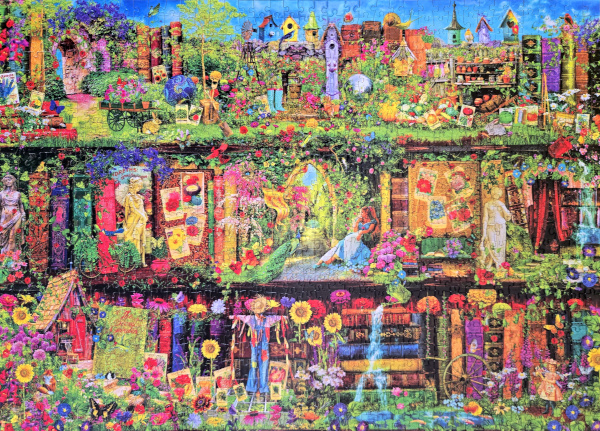
Size: 1000 pieces
Available for purchase on eBay
Dimensions: 50 cm x 70 cm
Manufacturer: Toywea, 20075-17, 0755-3360-0999
Artist: Aimee Stewart – Aimee Stewart gladly adopts the title ‘Renaissance Woman’, and for good reason. As a self taught artist, photographer and writer who has music in her soul and daydreams in her blood, she lives life as one giant creative endeavor.
In 1999, Aimee started dabbling in website design. By 2005, she had made the leap from simple graphics to experimental photomanipulation. Since then, Aimee has excelled in erasing the lines between ‘digital’ art and ‘traditional’ art, until only the inspired creation remains. [Bio on Aimee Stewart site]
Box: photo
Forest stream
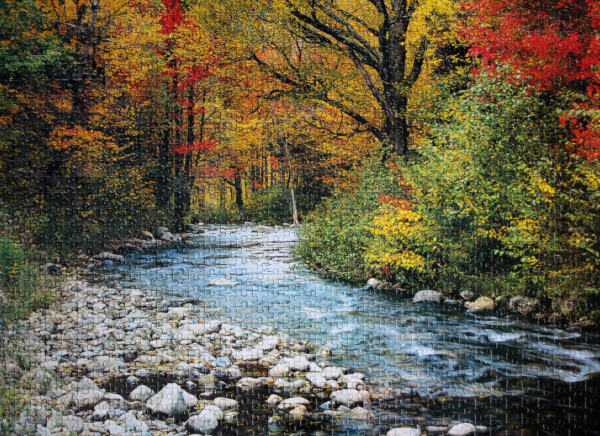
Size: 1000 pieces
Available for purchase on eBay
Dimensions: 48.89 cm x 67.63 cm
Manufacturer: Eurographics Puzzles, 6000-2132
Box: photo
Forest stream

Size: 1000 pieces
Available for purchase on eBay
Dimensions: 48.89 cm x 67.63 cm
Manufacturer: Eurographics Puzzles, 6000-2132
Box: photo
Quartier Petit Champlain, Québec
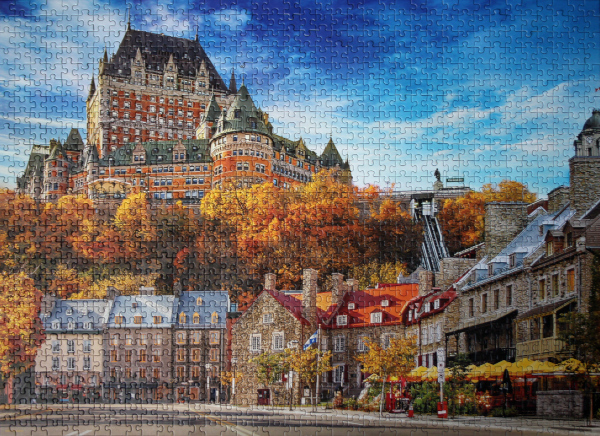
Size: 1000 pieces
Available for purchase on eBay
Dimensions: 48.89 cm x 67.63 cm
Manufacturer: Eurographics Puzzles, 6000-5809
Box: photo
Courtyard

Size: 1000 pieces
Available for purchase on eBay
Dimensions: 50 cm x 70 cm
Box: photo
Flower Garden Triptych
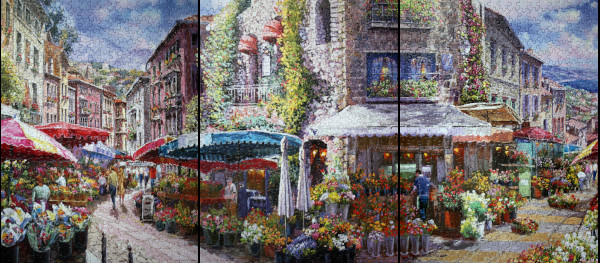
Size: 1500 pieces
Available for purchase on eBay
Dimensions: 61 cm x 137 cm
Manufacturer: Karmin International, 02430-SB, 98700459
Artist: Sam Park
Box: photo
Vintage summer books
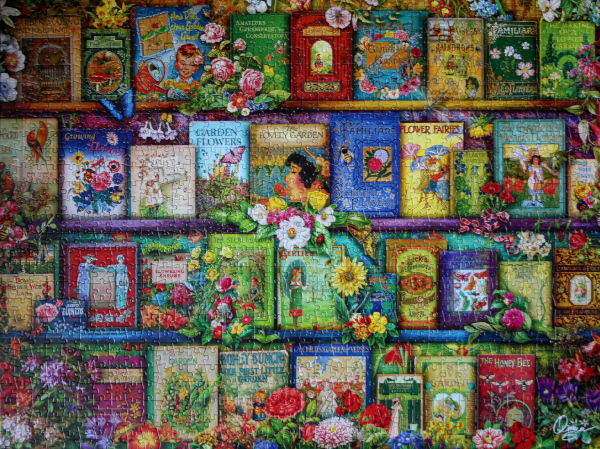
Size: 1000 pieces
Available for purchase on eBay
Dimensions: 50 cm x 68 cm
Manufacturer: Buffalo Games, 91520
Artist: Aimee Stewart – Aimee Stewart gladly adopts the title ‘Renaissance Woman’, and for good reason. As a self taught artist, photographer and writer who has music in her soul and daydreams in her blood, she lives life as one giant creative endeavor.
In 1999, Aimee started dabbling in website design. By 2005, she had made the leap from simple graphics to experimental photomanipulation. Since then, Aimee has excelled in erasing the lines between ‘digital’ art and ‘traditional’ art, until only the inspired creation remains. [Bio on Aimee Stewart site]
Box: photo
Tree of Life by Charley Harper
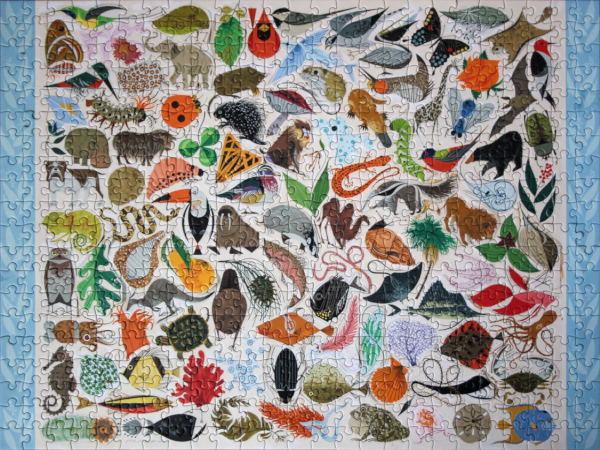
Size: 500 pieces
Available for purchase on eBay
Dimensions: 45.7 cm x 61 cm
Manufacturer: Pomegranate, ISBN 978-0-7649-6196-0, Catalog no. AA708
Artist: Charley Harper
Box: photo
Christmas ornaments
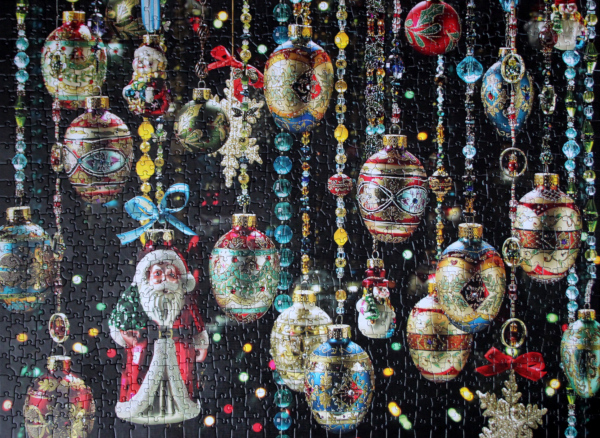
Size: 1000 pieces
Available for purchase on eBay
Dimensions: 48.9 cm x 67.6 cm
Manufacturer: Cobble Hill, Item No. 80140
Photographer:
Jo-Ann Richards
Box: photo
The Secret of Bleakdale Abbey
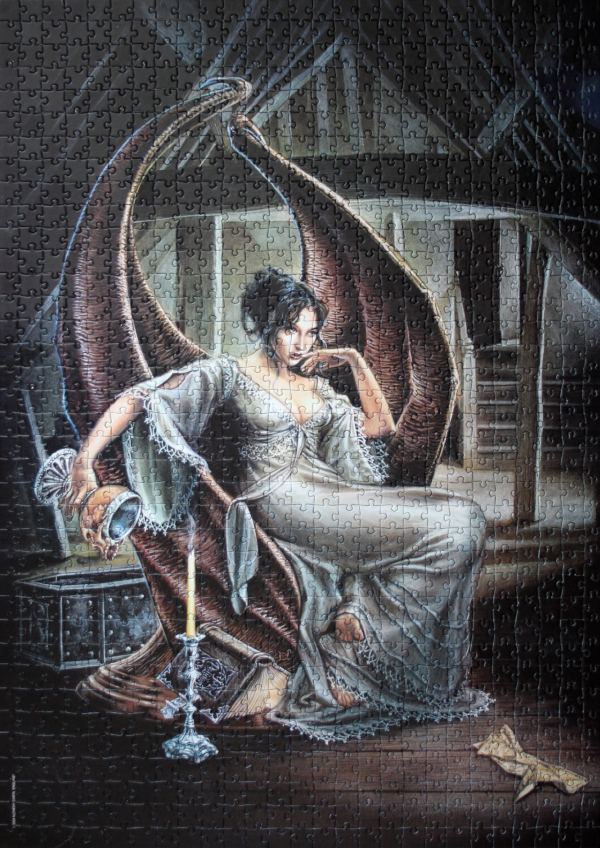
Size: 1000 pieces
Available for purchase on eBay
Dimensions: 47.7 cm x 67.7 cm
Manufacturer: Clementoni, Art. 39111
Artist:
Alchemy Carta, England
Box: photo
Cinque Terre Splendor
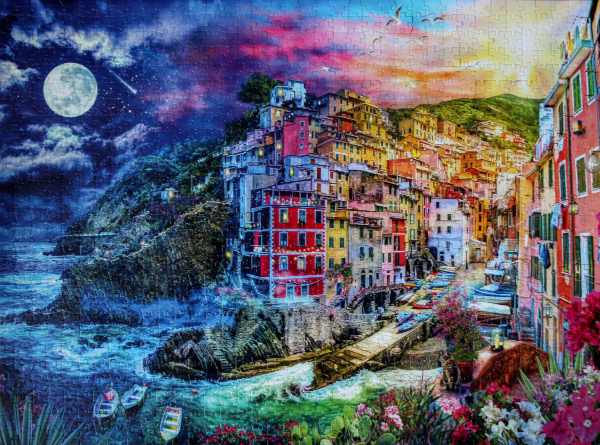
Size: 1000 pieces
Available for purchase on eBay
Dimensions: 50 cm x 68 cm
Manufacturer: Buffalo Games, 11840
Box: photo
M.C.Escher – Self portrait
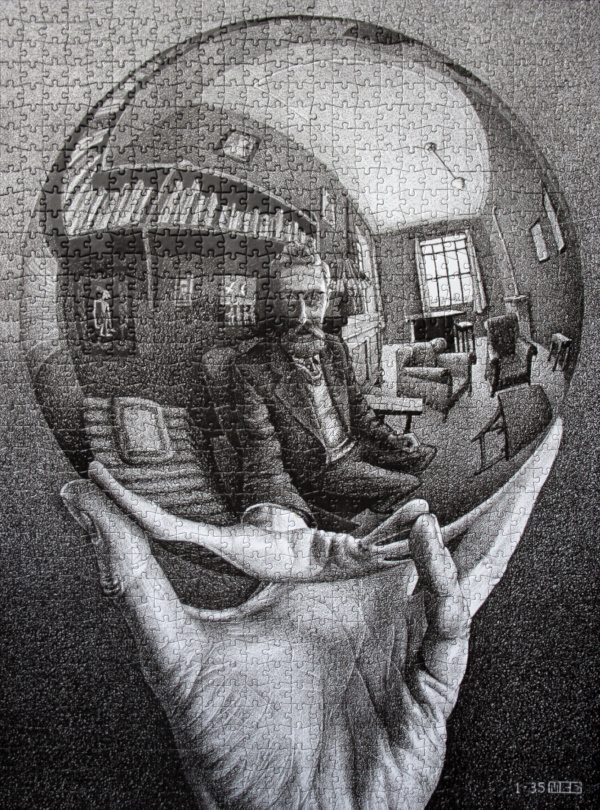
Size: 1000 pieces
Available for purchase on eBay
Dimensions: 50 cm x 68 cm
Manufacturer: Buffalo Games, 079346113644
Author: M.C.Escher
Box: photo
Fearless Rider by Boris Vallejo
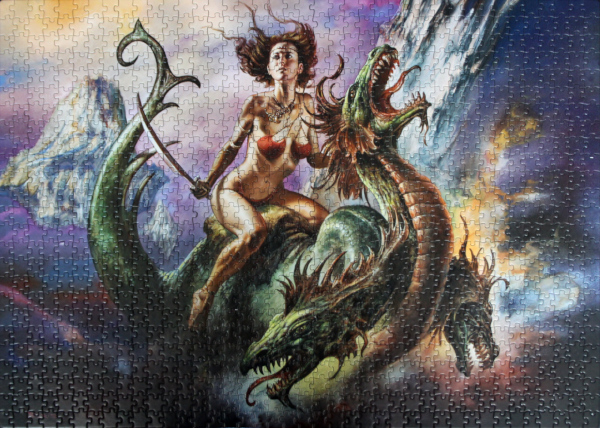
Size: 1000 pieces
Available for purchase on eBay
Dimensions: 48 cm x 67 cm
Manufacturer: The Canadian Group, ISBN 978-1-5235-1321-5
Box: photo
Flowers Bouquet
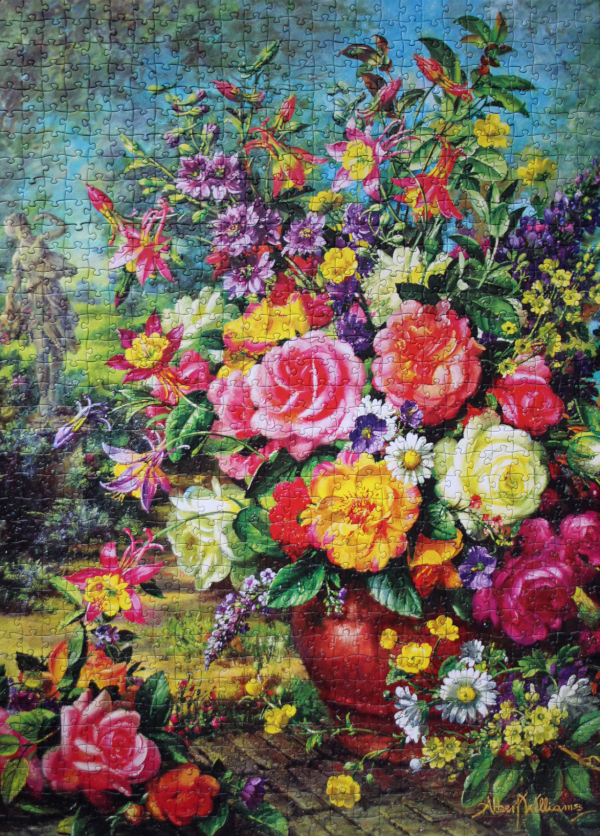
Size: 1000 pieces
Available for purchase on eBay
Dimensions: 48.89 cm x 67.63 cm
Manufacturer: The Canadian Group, 6000-5883, Art.: 2147905
Box: photo





